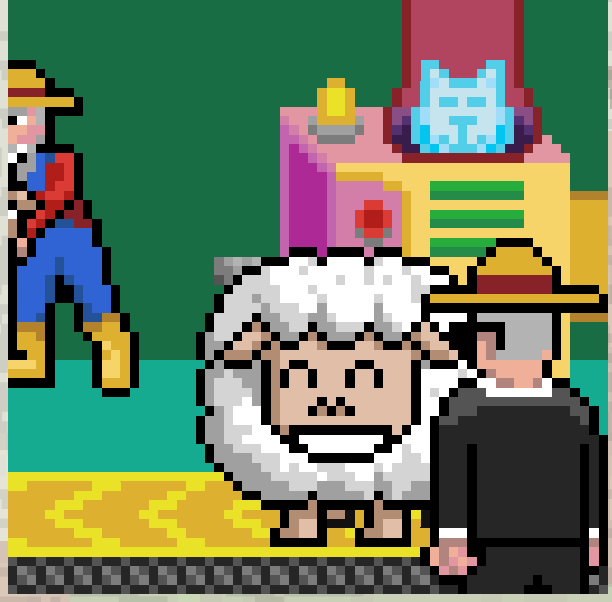Wolf Game and Tokenomics: Introducing Risk Protocols
The NFT game that has people making thousands of dollars a day for only a few minutes of work. Learn about how Wolf Game is changing the play-to-earn ecosystem!

Blockchain games have been widely considered the next trend for the gaming industry with Web 3. The infrastructure powering blockchain and cryptocurrencies have led to play-to-earn games like Axie Infinity, where users are earning in-game tokens while playing. This is a huge shift from the current gaming industry, where players often buy skins in games like Fortnite to boost appearances without any potential resale gains (selling the skin to someone else).
In the month of November, a new play-to-earn game called Wolf Game was released. Wolf Game quickly generated millions of dollars in sale and had a bunch of influencers, Beaniemaxi in particular, praising the project. With gas prices high and a large saturation of NFT projects in the last few months, the market hasn't seen many high-volume projects. So whenever a project, such as Wolf Game has 100x'd, it begins to bring attention to basically anyone in this space.
Wolf Game Thoughts 👇
— Beanie (@beaniemaxi) December 23, 2021
It's no secret that I've become obsessed with Wolf Game. I'm fascinated by game theory and Wolf Game delivers it in a way that's easy to understand and doesn't require 8 hours of my day like Axies. P2E is the future and Wolf Game is the first world version.
What makes Wolf Game so unique? We'll go over this in more depth in the article, but the game introduces new mechanics and concepts that are very interesting and unlike most other play-to-earn games which allowed people to make thousands to tens of thousands of dollars within the few days of the release.
How Wolf Game Works
Wolf game introduces a new mechanic to blockchain gaming that they've coined risk protocol. What is this? Simply put, they've added potential interactions between ERC-20 and ERC-721 protocols such as stealing NFTs (more on this later).
Note that the game is still in the infancy stage and only two versions have been released before full gameplay is set to release in 2022, meaning a lot of this can change in the next few months.
Initial Setup
The game minted with two NFTs, Sheep and Wolf, and an ERC-20 token, $WOOL. In the first generation (gen 0), 10k NFTs were available to mint, with 90% of them being Sheep and 10% being Wolves. You are allowed to stake Sheep in the Barn to accumulate 10,000 $WOOL a day, while a 20% tax is paid to the Wolves when claiming in exchange for their protection while in the Barn.
Staking
We mentioned that you are allowed to stake Sheep to accumulate daily $WOOL, but what does this actually mean? Staking is a merge between NFT technology (ERC-721 tokens) and DeFi. One goal of this is to provide liquidity for the NFT ecosystem. In Wolf Game's case, earning $WOOL can be used as the game's native currency to mint future generations of Sheep and Wolves.
Risk Protocol
The game runs a risk protocol because of the ability for Wolves to steal both ERC-721 and ERC-20 tokens. While you try to claim your $WOOL by unstaking your Sheep (leaving the Barn), there is a 50% chance that all of your $WOOL gets stolen by Wolves. The stolen $WOOL is split proportionally split for all Wolves owners based on the rarity (Alpha scores) of the wolf owned.
Alternatively, you can claim $WOOL without running into this risk by paying a 20% tax on all $WOOL earned for protection from the wolves.
Additionally, owning a Wolf also has a chance of stealing a newly minted Sheep or Wolf. Again, this value is higher based off the Alpha score for the Wolf.
What does Wolf Game mean for the future?
Within a few days of Wolf Game's release, the NFT community had seen incredible profits from owning Wolves or Sheep with the price of $WOOL hitting $0.32 on 11/23, which granted users staking Sheep roughly $3200 USD a day (an obviously unsustainable number).
Play-to-earn games aren't a new concept, and we've seen plenty of NFT projects with tokenomics that have outperformed Wolf Game. So why am I writing about this? Well, unlike popular play-to-earn games such as Axie Infinity, you don't need to spend 8-10 hours a day grinding the game to earn maximize earning potential. Wolf Game instead only requires a few minutes a day and rewards people who have invested early into the game (obtaining gen 0 or high alpha Wolves).
Of course, this does have some flaws. For instance, Wolves seems to be the ultimate NFT as the price of the NFT increases as the game's popularity increases while also giving the owner $WOOL stolen from sheep, this has led to Alpha 8 Wolves (the highest) to a ridiculous floor of 69 ETH. With the scarce amount of Gen 0 Wolves, this means that the game primary rewards large capital users who can afford wolves or a plethora of sheep.
Wolf Game has introduced a new type of play-to-earn game. One that rewarded early adopters and people who truly invested in the game during its infancy. The interactions between ERC-721 and ERC-20 tokens along with the minimal amount of effort required to play the game will help lead the next generation of gaming NFTs.

